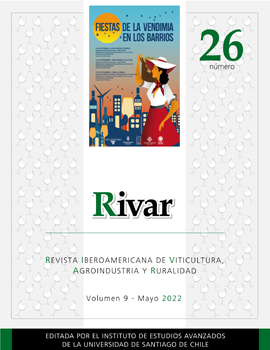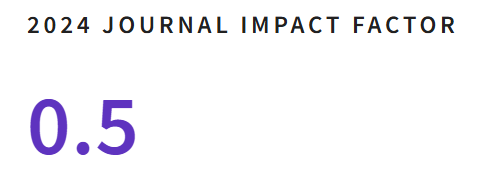Chili Pepper (Capsicum spp.) as a Peasant Cultural Heritage: Exploratory Analysis
DOI:
https://doi.org/10.35588/rivar.v9i26.5531Keywords:
intangible cultural heritage, biodiversity, peasantry, agricultural development, chili pepperAbstract
Peasant communities in Chile produce and process local varieties of chili pepper (Capsicum spp.). This crop is of pre-Hispanic origin, being an essential spice for the local gastronomy. Despite the expansion of industrial agriculture, these communities preserve traditional systems of production and processing. In addition, the communities have intuitively added value to their produce highlighting its ancestral origin, local varieties, traditions and identities associated with its production and consumption. We propose that chili pepper production by peasant communities can be recognized as a cultural heritage and be safeguarded. The objective was to explore cultural heritage elements of the production, processing, and uses of chili pepper in peasant communities, as a contribution to safeguard this heritage. The method was a participatory exploration of the chili pepper production systems in two peasant communities from different conceptual frameworks of cultural heritage. The results show that the heritage linked to chili pepper is a living, dynamic and indivisible intergenerational web of culture, knowledge, technologies and local genetic resources. The empowerment and mobilization of the communities are key aspects for the conservation of cultural heritage, although attention must be paid to economic functions supporting chili pepper production.
Downloads
References
Arnés García, M.; Yagüe, JL; de Nicolás, VL. y Díaz-Puente, JM. (2020). “Characterization of Globally Important Agricultural Heritage Systems (GIAHS) in Europe”. Sustainability 12(4): 1611. DOI https://doi.org/10.3390/su12041611
Ballart, J. (1997). El patrimonio histórico y arqueológico: valor y uso. Barcelona, Ariel.
Castillo, J. y Martínez, C. (2014). “El patrimonio agrario: definición, caracterización y representatividad en el ámbito de la UNESCO”. Boletín de la Asociación de Geógrafos Españoles 66: 105-124. DOI https://doi.org/10.21138/bage.1782
FAO (2018). Sistemas Importantes del Patrimonio Agrícola Mundial, SIPAM. Roma, FAO. En https://www.fao.org/giahs/es/ (consultado 20/05/2022).
____. (2009). International Treaty on Plant Genetic Resources for Food and Agriculture. Roma, FAO.
García Canclini, N. (2005). Culturas híbridas: estrategias para entrar y salir de la modernidad. Buenos Aires, Paidós.
García, M. y Uribe, M. (2012). “Contextos de uso de las plantas vinculadas al complejo Pica-Tarapacá, Andes centro-sur: arqueobotánica y agricultura en el periodo Intermedio Tardío (CA. 1250-1450 DC). Estudios Atacameños 44: 107-122.
Gay, C. (1862). Historia física y política de Chile, Agricultura. Tomo segundo. Santiago de Chile, Museo de Historia Natural.
Getty Conservation Institute (2002). Assessing the Values of Cultural Heritage. Los Ángeles, Getty Conservation Institute.
Graddy, TG. (2013). “Regarding Biocultural Heritage: In Situ Political Ecology of Agricultural Biodiversity in the Peruvian Andes”. Agricultural Human Values 30(4): 587-604. DOI https://doi.org/10.1007/s10460-013-9428-8
León, R. (1968). Historia de Curicó. Tomo I, La Era Colonial. Santiago de Chile, Neupert.
MINCAP (2019). Herramientas para la gestión local del patrimonio cultural inmaterial, el proceso para la salvaguarda del patrimonio cultural inmaterial en Chile. Santiago de Chile, MINCAP.
Ming Ming, S.; Yehong, S.; Geoffrey, W. y Qingwen, M. (2020). “Agricultural Heritage Conservation, Tourism and Community Livelihood in the Process of Urbanization – Xuanhua Grape Garden, Hebei Province, China”. Asia Pacific Journal of Tourism Research 25(3): 205-222. DOI https://doi.org/10.1080/10941665.2019.1688366
Montecino, S. (2004). Cocinas mestizas de Chile, la olla deleitosa. Santiago de Chile, Museo de Arte Precolombino.
Montecino, S.; Franch, C.; Planella, MT. y Razeto, J. (2009). Metodología FIA-FACSO para la elaboración de inventarios de productos y preparaciones patrimoniales de la tierra y del mar en Chile. Santiago de Chile, FIA y FACSO.
Pardo, O. y Pizarro, JL. (2013). Chile: plantas alimentarias prehispánicas. Arica, Parina.
Perry, L.; Dickau, R.; Zarrillo, S.; Holst, I.; Pearsall, DM.; Piperno, D.; Berman, MJ.; Cooke, RG.; Rademaker, K.; Ranere, A.; Raymond, JS.; Sandweiss, DH.; Scaramelli, F.; Tarble, K. y Zeidler, JA. (2007). “Starch Fossils and the Domestication and Dispersal of Chili Peppers (Capsicum spp. L.) in the Americas”. Science 315: 986-988. DOI https://doi.org/10.1126/science.1136914
Planella, MT.; Falabella, F. y Tagle, MB. (2010). “Reconstruyendo cocinas y recuperando sabores de Chile central prehispano”. En Sciolla, C. (ed.). Historia y cultura de la alimentación en Chile. Santiago de Chile, Catalonia: 63-85.
Ramírez, O. (1995). Un diario una ciudad, un siglo de Curicó en La Prensa. Talca, Universidad de Talca.
Sault, N. (2018). “Chiles que arden: el rojo picante que protege y sana en Oaxaca”. En Aguilar-Meléndez, A. (dir.). Los chiles que le dan sabor al mundo. Marsella, IRD Éditions.
Toledo, V. (2013). “El paradigma biocultural: crisis ecológica, modernidad y culturas tradicionales”. Sociedad y Ambiente 1(1): 50-60. DOI https://doi.org/10.31840/sya.v0i1.2
UNESCO (2003). Convención para la Salvaguarda del Patrimonio Cultural Inmaterial. París, UNESCO.
____. (1972). Convención sobre la Protección del Patrimonio Mundial, Cultural y Natural. París, UNESCO.
Vásquez, P. (1902). “Voces de mi tierra”. El Chileno 18: 56-57.
Yehong, S.; Dallen, JT.; Ying, W.; Qingwen, M. y Yingying, S. (2019). “Reflections on Agricultural Heritage Systems and Tourism in China”. Journal of China Tourism Research.
Yukio, Y. y Kazem, V. (2020). “Comparing Cultural World Heritage Sites and Globally Important Agricultural Heritage Systems and their Potential for Tourism”. Journal of Heritage Tourism.
Downloads
Submitted
2022-05-28Published
Versions
- 2024-08-16 (2)
- 2022-05-28 (1)









